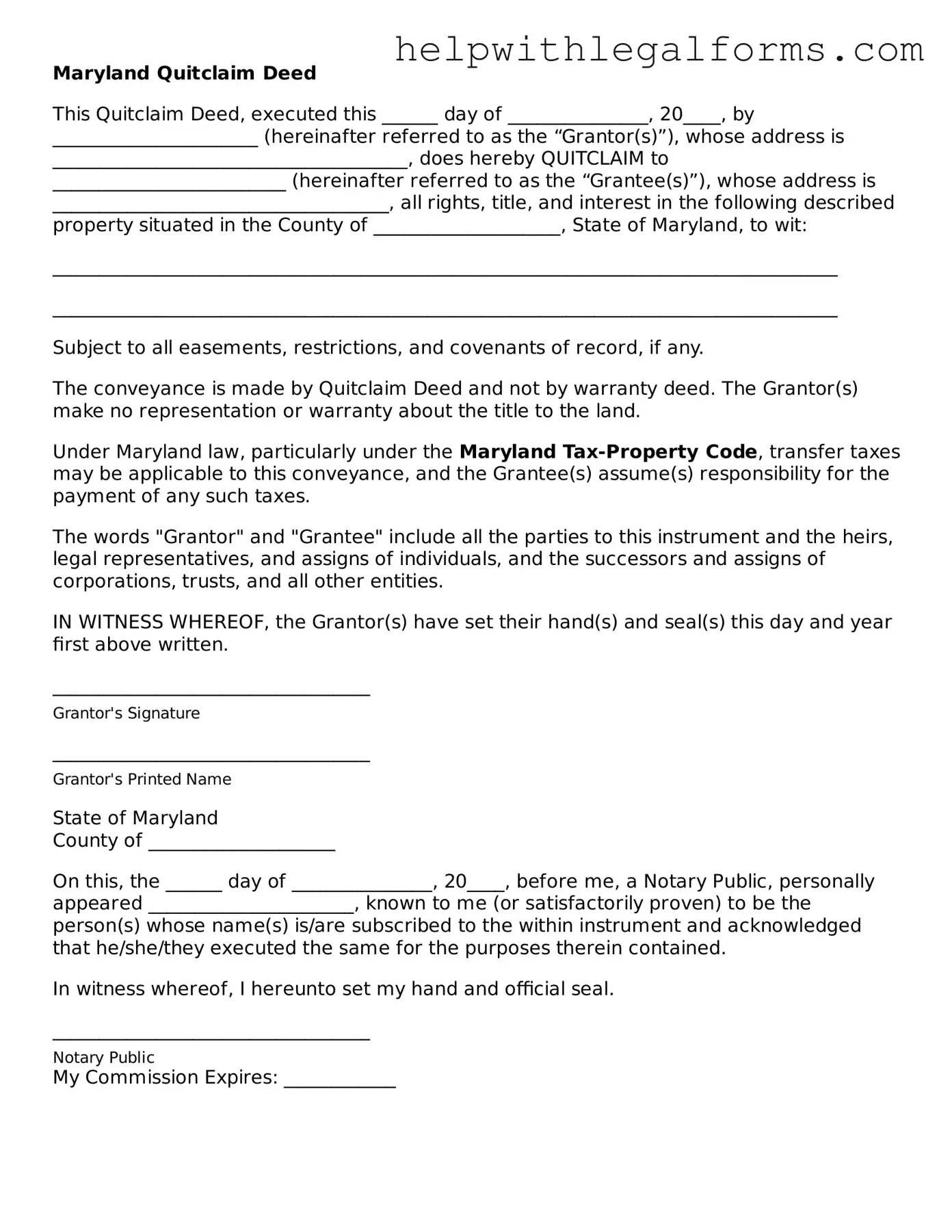Maryland Quitclaim Deed
This Quitclaim Deed, executed this ______ day of _______________, 20____, by ______________________ (hereinafter referred to as the “Grantor(s)”), whose address is ______________________________________, does hereby QUITCLAIM to _________________________ (hereinafter referred to as the “Grantee(s)”), whose address is ____________________________________, all rights, title, and interest in the following described property situated in the County of ____________________, State of Maryland, to wit:
____________________________________________________________________________________
____________________________________________________________________________________
Subject to all easements, restrictions, and covenants of record, if any.
The conveyance is made by Quitclaim Deed and not by warranty deed. The Grantor(s) make no representation or warranty about the title to the land.
Under Maryland law, particularly under the Maryland Tax-Property Code, transfer taxes may be applicable to this conveyance, and the Grantee(s) assume(s) responsibility for the payment of any such taxes.
The words "Grantor" and "Grantee" include all the parties to this instrument and the heirs, legal representatives, and assigns of individuals, and the successors and assigns of corporations, trusts, and all other entities.
IN WITNESS WHEREOF, the Grantor(s) have set their hand(s) and seal(s) this day and year first above written.
__________________________________
Grantor's Signature
__________________________________
Grantor's Printed Name
State of Maryland
County of ____________________
On this, the ______ day of _______________, 20____, before me, a Notary Public, personally appeared ______________________, known to me (or satisfactorily proven) to be the person(s) whose name(s) is/are subscribed to the within instrument and acknowledged that he/she/they executed the same for the purposes therein contained.
In witness whereof, I hereunto set my hand and official seal.
__________________________________
Notary Public
My Commission Expires: ____________
